Troubleshooting
Please make sure you always use the latest firmware version.
Do NOT unplug the openSPOT3 during the firmware upgrade!
If you can't find an answer to your issue, then please send us am email, or ask help in our community forum!
The web interface can't be opened
Use SharkRF Link to open the web interface.
SharkRF Link does not open the openSPOT3 web interface
Make sure your web browser device (phone/tablet/computer) is connected to the exact same Wi-Fi network the openSPOT3 is using.
Check if the openSPOT3 is connected to the Wi-Fi network by looking at its status LED. Please see the LED states section for possible status LED states. If the openSPOT3 is not connected to the Wi-Fi network according to the status LED, see the next troubleshooting question's answer on how to set up the openSPOT3's Wi-Fi connection.
Also check the Wi-Fi client isolation in your Wi-Fi router's settings. It should be turned off.
The openSPOT3 can't connect to the Wi-Fi network
Please first check the status LED's color on the device. You can see the list of LED states on this page. The openSPOT3 can't connect to the Wi-Fi network only if the status LED is flashing blue for a longer period of time (at least 2-3 minutes). If you see other status LED colors than blue, then the issue is not with connecting to the Wi-Fi network.
- You can reconfigure the Wi-Fi connection if you switch back the openSPOT3 to access point mode by pressing the button for 3 seconds.
- The openSPOT3 will start broadcasting its own Wi-Fi network called openSPOT3 AP, indicated by white status LED. You can connect to this network using your browser device (phone/tablet/computer).
- Make sure you place your browser device close to the openSPOT3 during this time.
- The initialization setup will pop up, where you can select the country of operation and configure a Wi-Fi network for the openSPOT3 to connect to. If the initialization setup won't open automatically, then you can open it by entering http://192.168.99.1/ into the web browser while your browser device is connected to the Wi-Fi network openSPOT3 AP. Note that this address is only active while the openSPOT3 is in AP mode, indicated by white status LED.
- Make sure you've entered the Wi-Fi password case sensitive.
- After you've chosen the Wi-Fi network and entered the password, the openSPOT3 stops broadcasting its own Wi-Fi network and starts connecting to the selected network. At that moment, your browser device (phone/tablet/computer) will disconnect from the openSPOT3's network. What you have to do now is to connect to the exact same Wi-Fi network with your browser device as you've configured for the openSPOT3.
- If you have WEP encryption on your router, then make sure the password is in ASCII, not hex. The openSPOT3 only supports ASCII WEP passwords. The best is to switch the encryption to WPA2 or WPA because it's much safer.
- Make sure you have enabled 2.4GHz Wi-Fi, not just 5GHz.
- Place the openSPOT3 close to the Wi-Fi router.
- Make sure the Wi-Fi bandwith is set to max. 20Mhz in the Wi-Fi router (see explanation here).
- If it still does not work, try switching Wi-Fi channel on your Wi-Fi router. Only channels 1, 6 or 11 should be used (see explanation here).
You can also find more information on the Connecting the openSPOT3 to a Wi-Fi network page on the steps required to set up the openSPOT3's Wi-Fi connection.
The status LED is white
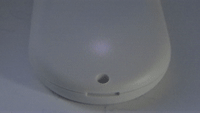
White status LED means that the openSPOT3 is in AP (access point) mode. In this mode, the openSPOT3 does not connect to any Wi-Fi network, so it is not connected to the internet, and SharkRF Link won't work.
- In this mode, the openSPOT3 broadcasts its own Wi-Fi network called openSPOT3 AP, indicated by white LED. You can connect to this network using your browser device (phone/tablet/computer).
- Make sure you place your browser device close to the openSPOT3 during this time.
- The initialization setup will pop up, where you can select the country of operation and configure a Wi-Fi network for the openSPOT3 to connect to. If the initialization setup won't open automatically, then you can open it by entering http://192.168.99.1/ into the web browser while your browser device is connected to the Wi-Fi network openSPOT3 AP. Note that this address is only active while the openSPOT3 is in AP mode, indicated by white status LED.
- Make sure you've entered the Wi-Fi password case sensitive.
- After you've chosen the Wi-Fi network and entered the password, the openSPOT3 stops broadcasting its own Wi-Fi network and starts connecting to the selected network. At that moment, your browser device (phone/tablet/computer) will disconnect from the openSPOT3's network. What you have to do now is to connect to the exact same Wi-Fi network with your browser device as you've configured for the openSPOT3.
- If you have WEP encryption on your router, then make sure the password is in ASCII, not hex. The openSPOT3 only supports ASCII WEP passwords. The best is to switch the encryption to WPA2 or WPA because it's much safer.
- Make sure you have enabled 2.4GHz Wi-Fi, not just 5GHz.
- Place the openSPOT3 close to the Wi-Fi router.
- Make sure the Wi-Fi bandwith is set to max. 20Mhz in the Wi-Fi router (see explanation here).
- If it still does not work, try switching Wi-Fi channel on your Wi-Fi router. Only channels 1, 6 or 11 should be used (see explanation here).
You can also find more information on the Connecting the openSPOT3 to a Wi-Fi network page on the steps required to set up the openSPOT3's Wi-Fi connection.
The status LED is green/yellow
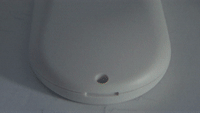
Green/yellow LED means the openSPOT3 is connected to the configured Wi-Fi network and it is standing by (the Null connector is active).
What you have to do is to connect your browser device (phone/tablet/computer) to the exact same Wi-Fi network as you've configured for the openSPOT3 and use SharkRF Link to open its web interface. If it does not work, then make sure Wi-Fi client isolation is turned off in your Wi-Fi router's settings.
The web interface only loads partially
Make sure you use a supported browser (Chrome, Firefox or Safari), and that the browser is updated to the latest version.
If you're trying to do the initialization setup (the openSPOT3's status LED is white), then place the openSPOT3 close to your browser device (phone/tablet/computer) during the setup.
Otherwise, try placing the openSPOT3 closer to the Wi-Fi access point (your Wi-Fi router).
I need help connecting the openSPOT3 both to home and phone Wi-Fi network
Here's a quick tip on setting up the OS3 both for home and phone Wi-Fi connections:
First you should connect your openSPOT3 to your home Wi-Fi network and then when it's connected (status LED is green or green/yellow) open the web interface using sharkrf.link. After that you can set up additional Wi-Fi networks if you turn on Advanced mode (checkbox at the bottom right corner of the web interface) and go to the Network page, Wireless settings section. Set your home Wi-Fi as SSID #1 (and key) and your phone's Wi-Fi as SSID #2 (and key). If your home Wi-Fi (SSID #1) is not reachable then the openSPOT3 will automatically try to connect to your phone's Wi-Fi (SSID #2).
Make sure you enter passwords case sensitive.
If you use an iPhone then:
- Make sure you use the Save button at the Wireless scan list to save the iPhone's Wi-Fi network to SSID #2 as it contains a special apostrophe character which you can't enter using your keyboard
- Make sure you keep the iPhone's Wi-Fi hotspot settings page open while doing a wireless scan on the openSPOT3, because the iPhone only broadcasts its Wi-Fi network name if that page is kept open on the phone. We have tested the OS3 with iOS versions up to 13. Newer iOS versions may work differently.
The openSPOT3 won't turn on
- Press and hold the power button for at least 8 seconds
- Make sure you've charged the device for at least 30 minutes
- Use a different wall charge adapter or different USB port on a computer to charge the unit
- Try flipping the USB-C connector of the cable upside down
If it still does not turn on, or the power LED is unlit even when it's connected to a charger, and pressing the power button for at least 8 seconds doesn't help, then the firmware upgrade process probably got interrupted.
Please do the following to resume firmware upgrade:
- Connect the openSPOT3 to a wall charge adapter or USB port on a computer
- Press both the Wi-Fi and power buttons at the same time until the status LED lights up steady white
- Release both buttons
The firmware upgrade process should resume indicated by red/green alternate status LED blinking. This usually takes several minutes. After the process is completed, the openSPOT3 will automatically reboot and you can continue using it.
If this don't help either, then do a manual firmware upgrade (method is described in the next troubleshooting entry).
I want to manually upgrade the firmware
- Download this file to your computer
- Plug the openSPOT3 using a USB cable into the computer
- Press and hold both buttons on the openSPOT3 for at least 10 seconds
- The LED will become steady white
- Release both buttons. The LED will become yellow and a flash drive will appear on your computer called BOOTLOADER
- Copy the previously downloaded file to this BOOTLOADER drive
- The LED will start blinking alternating red/green for about 2-3 minutes. After that it should be steady green
- The openSPOT3 will automatically reboot in 1 minute after the LED became steady green. Wait until it reboots and then you can continue using it (if the Wi-Fi module firmware is also upgraded then the LED will flash red/yellow for about 2-3 minutes after the reboot)
I get Connector authentication failed messages
Please take a look at this post.
You need to check the hotspot security setting on your BrandMeister SelfCare page. If hotspot security is turned on, you have to use the hotspot password you've set there as the server password in the openSPOT3. If hotspot security is turned off, then you have to use the default server password which is "passw0rd" (without the double quotation marks).
Note that servers nowadays usually require a hotspot security password to be set and enabled.
I get DMR ID not found messages
We update the openSPOT3's callsign-ID database weekly, usually on Mondays. Make sure your unit has upgraded to the latest database. You can see the currently active database version on the Status page. Check your ID again after the next week's update.
I'm not hearing anything on my radio
Please read the Setting up your transceiver section.
Check if your radio's LED is on when the openSPOT3 is transmitting. The openSPOT3 is transmitting if its status LED is blinking red:
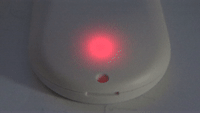
If it's blinking alternating red/orange, then BCLO is on:
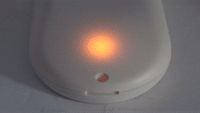
If this is the case then make sure it's turned off by setting it to 0 at the Other modem settings section.
If your radio's LED does not turn on when the openSPOT3 is transmitting, then make sure they are on the same RX and TX frequencies.
Make sure the openSPOT3's modem is set to the same mode as your radio, and the following settings are set:
- DMR radio: the color code (CC) match in your radio and the openSPOT3 (example: set it to the default 1). Make sure the talkgroup you want to hear is set as the TX contact of your DMR radio's currently active channel, or the talkgroup is in an RX group list which has been assigned to the currently active channel. You should also add TG9 to your the RX group list and assign it to the currently active channel to hear the openSPOT3's voice announcements.
- C4FM radio:
- The DGID is set to the same value both in your radio and the openSPOT3 (example: set it to the default 0).
- Make sure the Half Deviation setting is turned off in your transceiver, and use plain C4FM modem mode on the openSPOT3. If there's no such setting in your transceiver's menu, then you have to use C4FM Half Deviation modem mode, and run C4FM Half Deviation AutoCal on the openSPOT3 (or manually change the RX offset on the Modem page for the lowest BER). Test the connection between your transceiver and the openSPOT3 using the built-in local echo service.
- NXDN® radio: the radio access number (RAN) match in your radio and the openSPOT3 (example: set it to the default 0). Make sure the talkgroup you want to hear is in your NXDN® radio's contact list, or it is set as the TX contact of the currently active channel.
No one is hearing me on the network
Please read the Setting up your transceiver section.
Check where your radio is sending your call by looking at the Call log on the openSPOT3's web interface. Make sure your radio is sending the call to the desired talkgroup or reflector.
The openSPOT3's status LED should blink green when you press the PTT on your radio:
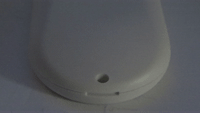
If not, then make sure the openSPOT3 and your radio are on the same RX and TX frequencies.
Make sure the openSPOT3's modem is set to the same mode as your radio, and the following settings are set:
- DMR radio: the color code (CC) match in your radio and the openSPOT3 (example: set it to the default 1).
- C4FM radio:
- The DGID is set to the same value both in your radio and the openSPOT3 (example: set it to the default 0).
- Make sure the Half Deviation setting is turned off in your transceiver, and use plain C4FM modem mode on the openSPOT3. If there's no such setting in your transceiver's menu, then you have to use C4FM Half Deviation modem mode, and run C4FM Half Deviation AutoCal on the openSPOT3 (or manually change the RX offset on the Modem page for the lowest BER). Test the connection between your transceiver and the openSPOT3 using the built-in local echo service.
- NXDN® radio: the radio access number (RAN) match in your radio and the openSPOT3 (example: set it to the default 0).
If you are using a D-STAR® server, then make sure your callsign registration is valid on this page. Also check if your registered callsign exactly match the callsign you've set on your D-STAR® or C4FM radio. There should be no suffixes. If you want to keep on using suffixes, then enable the Force source callsign to D-STAR® network for cross mode calls setting on the Settings page, D-STAR® settings section.
If you use a Kenwood TH-D74A transceiver, then make sure the Direct Reply feature is turned off, as it basically causes automatic callsign routing, which could cause one's transmission to not be heard on the used reflector.
The openSPOT3 can't connect to the selected server
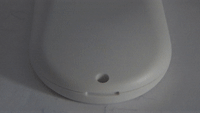
If the status LED is flashing like this, then the openSPOT3 is trying to connect to the selected server, but it can't for some reason. If it's not flashing like on the animation, check the LED states section for more information about the current LED state.
The server may be currently offline, or there may be a connection issue between your openSPOT3 and the server. You can try using another server, or enable the Override DHCP DNS servers setting.
Also check if the server password is set correctly (in case there's a server password), and that your connector settings are valid (example: if there's a callsign setting, make sure your callsign is valid, if there's a DMR/CCS7 or NXDN® ID setting, make sure your ID is valid for your callsign).
If you want to connect to the BrandMeister network, and the openSPOT3 won't connect to any BrandMeister server, then make sure you use the hotspot security password you've set on your BrandMeister SelfCare page. If hotspot security is turned off on your BrandMeister SelfCare page, then you have to use the default server password, which is passw0rd. The UK server uses the default password passw1rd.
There are dropouts in incoming calls, voice is stuttering
Please note that dropouts can happen when there's an issue/interference with:
- The server
- The server's internet connection (most amateur radio servers are running on unstable home internet connections not suitable for international links)
- The link between the server and your Wi-Fi router, or your internet connection
- Your Wi-Fi router
- The Wi-Fi link between your openSPOT and your Wi-Fi router
These issues cause dropped packets, which are indicated on the Dejitter queue graph on the openSPOT3's Status page as "invalid seqnum errors". They may cause dropouts in the voice transmissions.
If there are no invalid seqnum errors, but the dejitter queue graph shows that the queue gets empty during a call, then you can try increasing the dejitter queue length at the Network settings section.
Make sure you use a server nearest to your location to avoid network dropouts and high latency. Please keep in mind, that packet loss and high latency can occur in VoIP (Voice over IP) streams even if you have a really high quality network connection.
What you can do to avoid dropouts are:
- Use a different server, which has a stable connection (try BrandMeister servers in cross mode)
- Place the openSPOT3 close to the Wi-Fi router.
- Make sure the Wi-Fi bandwith is set to max. 20Mhz in the Wi-Fi router (see explanation here)
- Try switching Wi-Fi channel on your Wi-Fi router. The currently used one may be overcrowded, which you may not notice during web browsing, as the web uses a protocol which resend missing data frames, but this can't be done in real time VoIP streams so the packet loss issue becomes instantly noticable. Only channels 1, 6 or 11 should be used (see explanation here)
- Try using a different Wi-Fi router or internet connection
Wi-Fi disconnects (blue status LED) or internet connection errors (red/blue status LED)
Try to set another Wi-Fi channel in your Wi-Fi network. The currently used one may be overcrowded. It is advisable to use Wi-Fi channels 1, 6 or 11. Do not use the others as they only cause more interference. Also try placing the openSPOT3 closer to your Wi-Fi router / access point.
Color code mismatch warnings on the web interface
Make sure the color code programmed for your radio's current channel is matching the openSPOT3's color code. If they match, then probably there's an offset between the radio's TX frequency and the openSPOT3's RX frequency. Please use DMR AutoCal, or manually enter different frequencies in +-100 Hz steps at the RX offset on the Modem page for the lowest BER. You can test your voice using the openSPOT3's built-in local echo service by calling DMR ID 9999.
The device does not upgrade the firmware
Note that you have to plug the openSPOT3 into a USB power supply, otherwise the bootloader can't start and the firmware will not be upgraded. This also applies to overnight automatic firmware upgrades.
The device can't check firmware upgrades, it shows retrying
Make sure the NTP, HTTP and HTTPS outgoing traffic is not disabled in your router's firewall. You can also try turning the Use DHCP server if available option off.
Upgrade downloads are slow
Downloading upgrades is a low priority task so it won't interfere with normal operation and also the device won't consume much power during the download.
The device does not turn on
If pressing and holding the power button for 1-2 seconds does not turn on the device, then press and hold the power button for at least 8 seconds to do a hard reboot.
If the power LED is blinking 3 times, then the devices turns immediately turns off, then the battery is overheated, and its protection is active. Avoid exposing the device to direct sunlight and wait a few minutes so the battery can cool down.
If there is no LED activity at all, then the battery may be completely depleted. Connect the openSPOT3 to a USB power supply and leave it for at least 30 minutes, then turn the device on with the power button. If it still does not power on, hold the power button for at least 8 seconds to perform a hard reboot.
If it still does not power on, and both the power and status LEDs are dark, then probably the openSPOT3 had a power outage during a firmware upgrade. Connect the openSPOT3 to a USB power supply, and press both buttons at the same time for 10 seconds, then release them and the upgrade process will continue. If both LEDs are still dark and there's no way to get them light up, or the status LED stays yellow and the firmware upgrade process does not resume, contact us at info@sharkrf.com.
DMR ID is not in the database warnings on the web interface
A valid DMR ID is only required by the network/server you use. The openSPOT3 only displays a warning about that and does not care if your ID is valid or not. We update the DMR ID database weekly, usually on Mondays. Wait for the next update and your DMR ID will be there.
Battery is charged to 100% and shows (ex.) 92% when unplugged
The battery is still charging when it is showing 100%. Charge is completed when the battery status on the web interface is "charge done", and the power LED is steady green. Make sure the device is plugged in until the charge is completely done. Note that the battery charge percentage is only a rough estimate.
Battery status displays slow charging
Slow charging does not supply enough power for the openSPOT3 to operate, so it will drain the battery while the openSPOT3 is turned on. Make sure the charge speed is normal or fast: use the supplied wall charge adapter, or connect the openSPOT3 to a standard USB port of a computer, also try flipping the USB-C connector of the cable upside down. Also make sure you use the supplied USB cable, or another one which is good quality, otherwise the charge speed will be slow.
The device turns off even when it's connected to a charger
Make sure the charging speed is normal or fast, not slow. See the previous troubleshooting question/answer.
Web interface call audio playback is choppy
Note that smooth call audio playback requires a Wi-Fi connection with a good signal quality. If you have issues with call audio playback, then please try using different browsers and make sure they are updated to the latest version.
Browsers reduce CPU allowance on non-active tabs after a while. The tab of the web interface must be kept active, otherwise the audio will be garbled. This browser behavior cannot be changed. If the audio becomes garbled, activate the tab, and/or reload the web interface to fix it.
Battery depletes too quickly
Please make sure to charge the battery full. If the battery is fully charged then the power LED is constantly green and the charging status displays "charge done". The length of the discharge time is affected by a lot of things.
The battery will discharge faster if:
- The device is transmitting or receiving
- There's traffic on the connected Wi-Fi network (even if the traffic is not to/from the openSPOT3)
- Wi-Fi signal quality
- Cross mode is used
- Web interface is opened
You can increase the discharge time by enabling powersaving